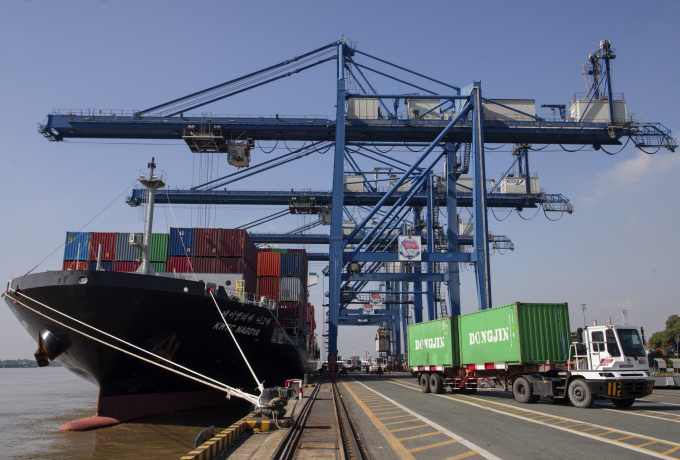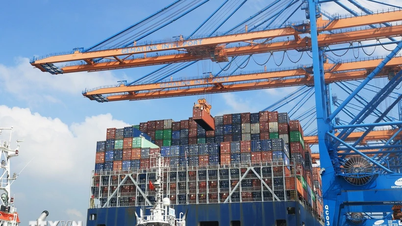VIMC General Director assessed that the maritime market in 2024 will face many difficulties and fierce competition when market purchasing power decreases.
The above viewpoint was shared by Mr. Nguyen Canh Tinh, General Director of Vietnam National Shipping Lines (VIMC) at the 2023 year-end conference on January 4. According to him, the global geopolitical and economic situation is having many unfavorable developments for the maritime industry, leading to fierce competition. Therefore, VIMC will have to make great efforts right from the first days of the year to complete the set goals.
Factors such as drought in the Panama Canal, escalating attacks on commercial vessels in the Red Sea and the Suez Canal affect shipping operations and could lead to disruptions in global supply chains.
Ship supply is expected to continue to grow this year as carriers begin taking delivery of new ships after two years of waiting for construction. Conversely, fewer ships are expected to be scrapped this year.
In fact, in 2023, the container shipping market has declined sharply, with the World Container Index (the index of shipping rates for 8 major routes globally) at times falling by more than 60% compared to the same period in 2022. Purchasing power in major markets such as the US and Europe is low, inventory is high, causing import demand to be very limited. Shipping lines have had to drastically cut operating costs, leading to many difficulties in negotiating service prices between ports and shipping lines.
On the other hand, VIMC's fleet is mostly old (average age of ships is 20), not synchronized, the fleet size is increasingly narrowing due to the restructuring process as well as due to problems in regulations on investment procedures, so for many years now, VIMC's enterprises have not been able to invest in developing the fleet.

Mr. Nguyen Canh Tinh, General Director of VIMC. Photo: Anh Duy
In addition, Mr. Tinh acknowledged that the VIMC seaport sector is also facing increasingly fierce pressure from the private sector as well as the emergence of many new ports in areas with advantages over the location of VIMC's ports. In the face of the general difficulties, shipping lines themselves are forced to cut costs, creating pressure on loading and unloading revenue at the ports.
In the coming time, he said the corporation will continue to promote fleet restructuring and implement cost management programs to improve productivity and competitiveness of member businesses.
"To retain customers, it is important to always sit in their shoes, which means always thinking and structuring business activities in a way that benefits customers," said the General Director of VIMC.
VIMC set a plan for 2024 with a sea transport output of 15.8 million tons (76% of the 2023 implementation) due to liquidation and reduction of the number of ships; seaport output of more than 123 million tons, revenue of VND 17,742 billion (99% compared to 2023) and profit of VND 2,169 billion (104% compared to last year).

Loading and transporting goods at Cat Lai port, Ho Chi Minh City. Photo: Thanh Nguyen
Last year, Vietnam National Shipping Lines recorded a maritime transport output of more than 20 million tons; cargo throughput through ports of about 113 million tons (reaching 92% of the same period last year); revenue of VND 17,964 billion (reaching 91% compared to 2022), profit of VND 2,084 billion (reaching 68% of the same period).
"This is a remarkable result of VIMC, especially in the context of 2023, when the world shipping market has many fluctuations," Mr. Nguyen Ngoc Canh, Vice Chairman of the State Capital Management Committee at Enterprises, assessed.
Vietnam National Shipping Lines currently has 33 member companies (19 subsidiaries, 14 affiliated companies) with 9,353 employees. VIMC has a shipping fleet of 59 vessels (10 container ships, 46 dry cargo ships, 3 oil tankers) with a total tonnage of 1.226 million DWT, accounting for about 18% of the national fleet tonnage.
VIMC manages and operates 89 wharves with a length of 16,500 m, accounting for more than 15% of the total length of wharves in the country.
Source link






































































































Comment (0)